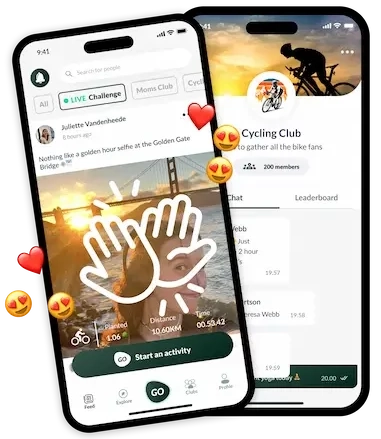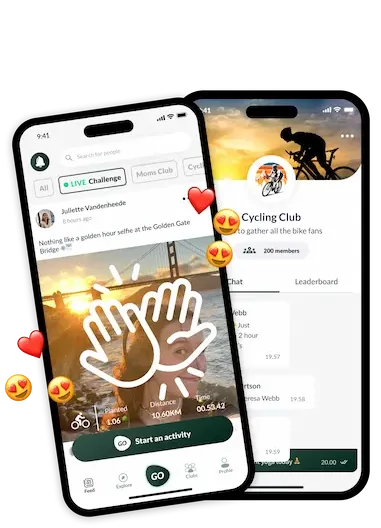Stop scrolling – start GOing! It’s a phrase that we all need to embrace if we want to break free from the digital addiction that has taken hold of our lives. It’s no secret that we spend a lot of time on screens, especially on social media. In fact, a recent study showed that the average person spends about 2.5 hours per day on social media. That’s a lot of time that could be spent doing something more meaningful, like exercising or spending time with loved ones. But why are we so attracted to screens? From an evolutionary perspective, our brains are hardwired to seek out novelty and stimulation, which is exactly what screens provide. But that’s not the only reason why we spend so much time on screens – for many people, it’s also a requirement of their work. The average office worker spends about 6 hours a day sitting in front of a screen, according to a recent study.
Digital Impact on Mental Health: Raising Awareness for Healthy Employee Engagement
It’s clear that screen time has evolved dramatically over the last 20 years. Back then, we didn’t have smartphones or social media, and we spent far less time in front of screens. But now, it’s become a troubling trend that’s affecting our mental health and wellbeing. And it’s also quite easy to lay out why we went down this rabbit hole in the first place. The simple formula: social media companies generate more money if people engage more – or spend more time – with their applications and websites. And of course, most of the features and algorithms used to keep us engaged don’t consider our actual health and happiness, but rather the company’s bottom line and therefore the goal to increase or even multiply the time spent on such tools.
By now, multiple studies have shown a direct link between social media usage and a decline in mental wellbeing, especially for children and young people. One study found that social media had a particularly negative impact on the mental health of young girls, who were more likely to experience anxiety and depression. It’s not unlikely that in 10 to 20 years, we will be thinking about exposing our children and youth to social media applications the same way as we think about exposing them to smoking today.
Promoting Healthy Habits: How teroGO Combines Fitness and Impact for Employee Wellbeing
As a tech company ourselves, we at teroGO recognize the challenges of balancing user engagement with our company mission to make the employees of our partner organizations more happy and healthy. Our platform features activities, challenges, and content that promote healthy habits such as sports or meditation. We also feature activities that are about making an impact for others or our planet, as studies show that helping someone or something actually increases our own wellbeing. For example, one study found that volunteering can lower stress levels and improve overall health.
We believe that it’s easier to work on our personal wellbeing when doing it together and when being impacted by a positive community. This is why our app also has features such as a feed to post photos, to exchange high-fives and to compete and engage with each other in groups. We think that this combination of community-driven wellbeing and some selected social media features is a driver towards creating more happy and healthy individuals and communities. It also helps employees who might work remotely to stay in touch with a positive company culture or to connect with their colleagues beyond work, even if they are located on a different continent. But it’s a slippery slope to not end up “optimizing” user engagement in line with the challenges mentioned above!
Defining Healthy User Engagement: Prioritizing Health and Happiness with teroGO
Of course, it’s important for any company with a user-centric approach to be able to show high user engagement. But what is a definition of a “healthy” user engagement? Maybe an engagement KPI that actually makes a positive impact for the user as a first priority, and not for teroGO? For us specifically, we don’t want to define user engagement as screen time or scrolling, but to actually make the people using teroGO to log as many healthy activities as possible to improve their own health and happiness.
We believe that is a good start, but we are far away from being perfect and still have to learn a lot and to hold ourselves accountable with the product strategy and framework we have defined to support our company mission. Meanwhile, a lot of our clients instinctively ask for features to be added to our app that might veer too much into the social media corner and where our definition of healthy engagement might be at stake. As an example, when our app started, we had our feed limited to 25 posts. This was mainly a technical decision to improve the performance of our app. Back then, when you reached the bottom of the feed, the app would simply tell you to stop scrolling and start GOing – without giving you much of a choice. However, most of our clients asked us to provide an unlimited feed on the app, which after some internal discussions, we ultimately did develop. However, as we see that people are maybe scrolling a bit too much, we are now bringing back a “Stop scrolling – start GOing” banner to make them aware that it indeed is their choice to stop scrolling and to start living in the real world!
The Challenge of Balancing Gamification and User Wellbeing: teroGO’s Approach
It will remain a big challenge for us to balance the act of creating healthy user engagement with a bit of gamification and “traditional” social media features while avoiding the need to tap into the addictive feature palette. This is why we have a clear product strategy that puts making people happy and healthy first. And maybe we will find an algorithm that makes people “addicted” in a positive sense towards behavior that really increases their health and happiness.
Our main responsibility as a tech company is to remember that any self-defined positive user engagement still is tied to everyone’s most precious good: their time. It is our responsibility to make the time they spend on the teroGO app count for themselves and not for teroGO. And for each second to improve their health and happiness. And finally, to maybe remember them from time to time to stop scrolling and to start GOing!
Written by Olivier Kaeser
This website stores cookies on your computer. These cookies are used to collect information about how you interact with our website and allows us to remember you. We use this information in order to improve and customize your browsing experience and for analytics and metrics about our visitors both on this website and other media. To find out more about the cookies we use, please see our Privacy Policy.



















